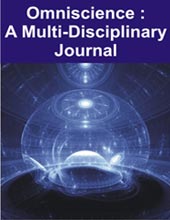[{“box”:0,”content”:”[if 992 equals=”Open Access”]
Open Access
n
[/if 992]n
n
n
n
n
- n t

n
Dr.Nishant B. Pandya1
[/foreach]
n
n
n[if 2099 not_equal=”Yes”]n
- [foreach 286] [if 1175 not_equal=””]n t
- Assistant Professor, Department of English. SDR Bapu Mahila Home Science and Lt. M. J. Kundaliya English Medium Mahila Commerce, Rajkot. Affiliated to Saurashtra University, Rajkot, Gujarat, India
n[/if 1175][/foreach]
[/if 2099][if 2099 equals=”Yes”][/if 2099]nn
Abstract
nIndian English Literature is a mixture of Indian sensibility and Indian Culture on one side and Western language on the other side. Indian English writers from different time frames have variedly injected the socio-political and cultural components in their literary works as it is said that Literature mirrors society and can serve as a social document. No writer can escape from the race, milieu, and moment in which he or she has lived. The same variedly colored and shaped their imagination and creativity and the same has been very well reflected in the works of Jayant Mahapatra. Jayant Mahapatra (1928), an Indian poet of remarkable vision and imagination, belongs to the generation of modern poets namely Nissim Ezekiel, A.K. Ramanujan, and Kamla Das. Jayant Mahapatra has been in the dominant position as an Indian Poet from 1970s and 1980s onwards. Indian English Poems have gained a new dimension and perspective in the hands of the aforesaid Indian poets who are true Indians depicting Indianness in its truest senses. Jayant Mahapatra stands in no exception for manifesting Indian culture in general and Oriya culture in particular with all its trials and tribulations, pains, and pangs of men, women, and children.
The present research papers propose to explore how Mahapatra uses his poetry as a vehicle for the expression of Indian scene in postcolonial era. His awareness about the sordid condition of the society and plight of people serves as the muse to his poetry. Close observation of the surroundings, problems of identity, myth, tradition, customs, rituals and contemporary situations/problems like Khalistan Movement, Nellie Massacre, Bhopal Gas tragedy are clear indicators of Indianness of Mahapatra which fall under the area of the concern.
n
Keywords: Jayant Mahapatra, Indianness, Postcolonial, Disillusionment, Contemporary, Indian English Poetry.
n[if 424 equals=”Regular Issue”][This article belongs to Omni Science: A Multi-disciplinary Journal(osmj)]
n
n
n
n
n
n
n[if 992 equals=”Open Access”] Full Text PDF Download[else] nvar fieldValue = “[user_role]”;nif (fieldValue == ‘indexingbodies’) {n document.write(‘Full Text PDF‘);n }nelse if (fieldValue == ‘administrator’) { document.write(‘Full Text PDF‘); }nelse if (fieldValue == ‘osmj’) { document.write(‘Full Text PDF‘); }n else { document.write(‘ ‘); }n [/if 992] [if 379 not_equal=””]n
Browse Figures
n
n
n[/if 379]n
References
n[if 1104 equals=””]n
- K., Das. A Critique of Post Colonial Theory. Twentieth Century Literary Criticism. New Delhi: Atlantic Publishers and Distibutors , 2002. Print.
- Iyengar, K. R. (2019). Indian Writing in English. Sterling Publications Private Limited.
- King, Modern Indian Poetry in English. New Delhi: Oxford University Press, 2004. Print. Littlewood, S.R. Essay in Criticism. London: Macmillian & Co., 1960. Print.
- Mahapatra, ” A Missing Person” The Lie of Dawns: Poems 1947-2008. Delhi: Author Press, 2009. Print.
- —. A Rains of Rites. Athens: University of Georgia Press, Print.
- —. Burden of Waves & Fruit. Washington: Three Continents Press, Print.
- —. Mahapatra J. Dispossessed Nests: The 1984 Poems. Nirala Publications; 1986.
- Panikar, Ayappa. “Peacocks among Patriarchs.” Contemporary Indian English Verse (1980): 116-117. Print.
- Pattanaik, “Caught in the Currents of Time: A Study in Jayant Mahapatra’s Poetry.”
- Recent Indian Literature in English: A Critical Perspective 1st (1999): Print.
nn[/if 1104][if 1104 not_equal=””]n
- [foreach 1102]n t
- [if 1106 equals=””], [/if 1106][if 1106 not_equal=””],[/if 1106]
n[/foreach]
n[/if 1104]
nn
nn[if 1114 equals=”Yes”]n
n[/if 1114]
n
n

n
n
n
n
n
| Volume | ||
| [if 424 equals=”Regular Issue”]Issue[/if 424][if 424 equals=”Special Issue”]Special Issue[/if 424] [if 424 equals=”Conference”][/if 424] | ||
| Received | February 22, 2024 | |
| Accepted | March 11, 2024 | |
| Published | March 25, 2024 |
n
n
n
n
n
nn function myFunction2() {n var x = document.getElementById(“browsefigure”);n if (x.style.display === “block”) {n x.style.display = “none”;n }n else { x.style.display = “Block”; }n }n document.querySelector(“.prevBtn”).addEventListener(“click”, () => {n changeSlides(-1);n });n document.querySelector(“.nextBtn”).addEventListener(“click”, () => {n changeSlides(1);n });n var slideIndex = 1;n showSlides(slideIndex);n function changeSlides(n) {n showSlides((slideIndex += n));n }n function currentSlide(n) {n showSlides((slideIndex = n));n }n function showSlides(n) {n var i;n var slides = document.getElementsByClassName(“Slide”);n var dots = document.getElementsByClassName(“Navdot”);n if (n > slides.length) { slideIndex = 1; }n if (n (item.style.display = “none”));n Array.from(dots).forEach(n item => (item.className = item.className.replace(” selected”, “”))n );n slides[slideIndex – 1].style.display = “block”;n dots[slideIndex – 1].className += ” selected”;n }n”}]

